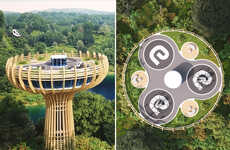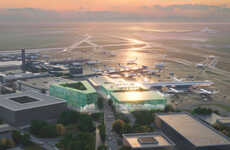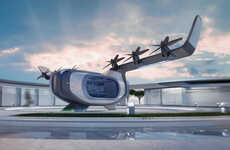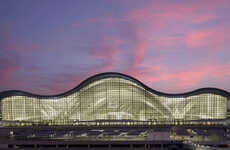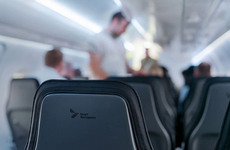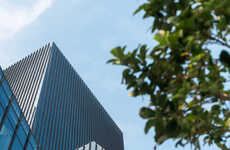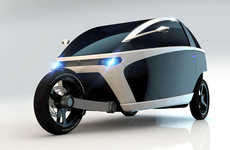
This Airport Runway Design is Constructed Above the City at Rooftop Level
This futuristic elevated airplane runway is a design concept created by Bartlett School of Architecture graduate Alex Sutton. The airplane runway proposal is called Stockholm City Airport/Airport City.
The design concept literally embeds the airport into the landscape of the city as part of a connecting and integrated piece of the functioning city transportation system. With the increasing demand for aviation transportation set to double by the year 2030, there is a relevant need to build convenient airports in closer proximity to travelers as opposed to constructing them on the outskirts of major cities.
The concept is designed to use functioning runways that are supported by surrounding buildings and existing structures. The entire system is a technologically advanced design that also introduces taxi-pods, green spaces and energy-saving concepts.
The design concept literally embeds the airport into the landscape of the city as part of a connecting and integrated piece of the functioning city transportation system. With the increasing demand for aviation transportation set to double by the year 2030, there is a relevant need to build convenient airports in closer proximity to travelers as opposed to constructing them on the outskirts of major cities.
The concept is designed to use functioning runways that are supported by surrounding buildings and existing structures. The entire system is a technologically advanced design that also introduces taxi-pods, green spaces and energy-saving concepts.
Trend Themes
1. Elevated Airport Runways - Disruptive innovation opportunity: Developing airport runway designs that are integrated into urban landscapes to increase convenience for travelers and reduce the need for building airports on the outskirts of cities.
2. Connected City Transportation Systems - Disruptive innovation opportunity: Creating transportation systems that seamlessly integrate airports into cities, improving efficiency and accessibility.
3. Technologically Advanced Airports - Disruptive innovation opportunity: Implementing innovative technologies, such as taxi-pods and energy-saving concepts, to transform the airport experience and reduce environmental impact.
Industry Implications
1. Aviation Transportation - Disruptive innovation opportunity: Revolutionizing the way airports are designed and built to meet the increasing demand for aviation transportation in a more convenient and sustainable manner.
2. Urban Planning - Disruptive innovation opportunity: Rethinking urban landscapes to incorporate airports as part of a holistic city transportation system.
3. Energy Efficiency - Disruptive innovation opportunity: Integrating energy-saving concepts into airport design and operations to reduce carbon footprint and promote sustainability.
4.1
Score
Popularity
Activity
Freshness

